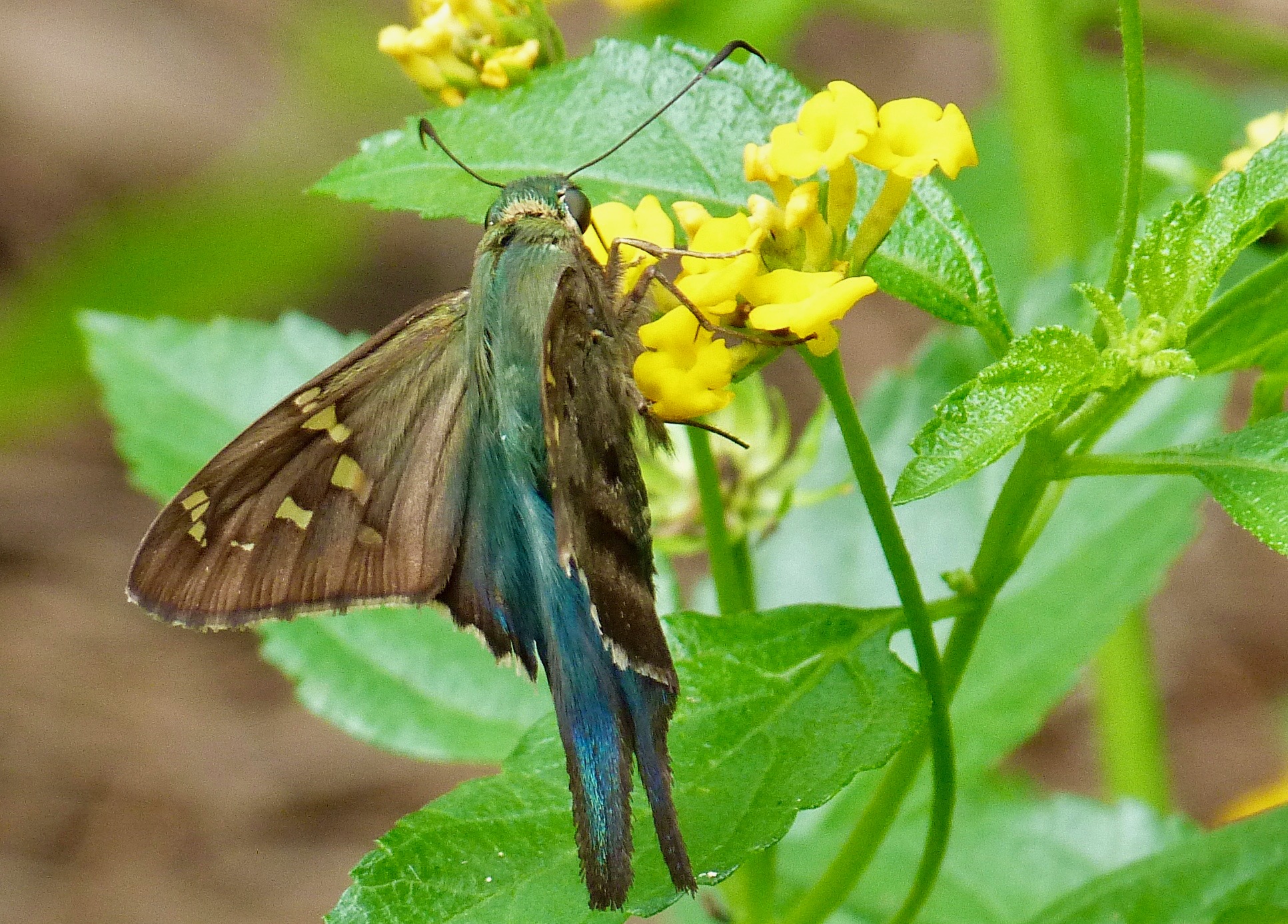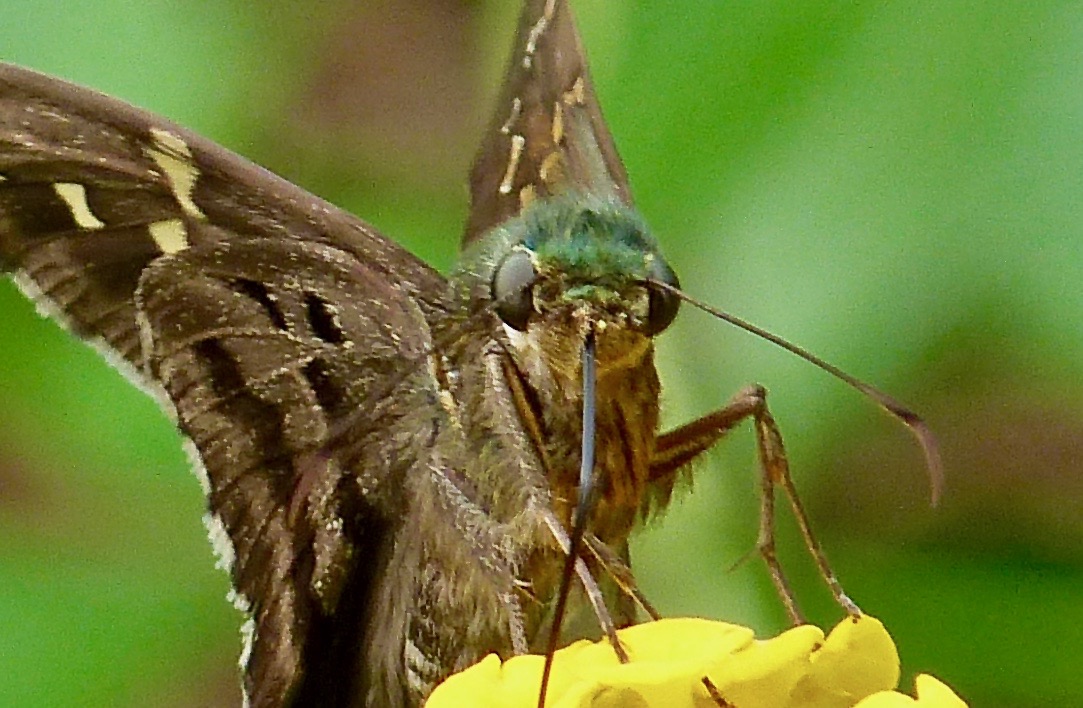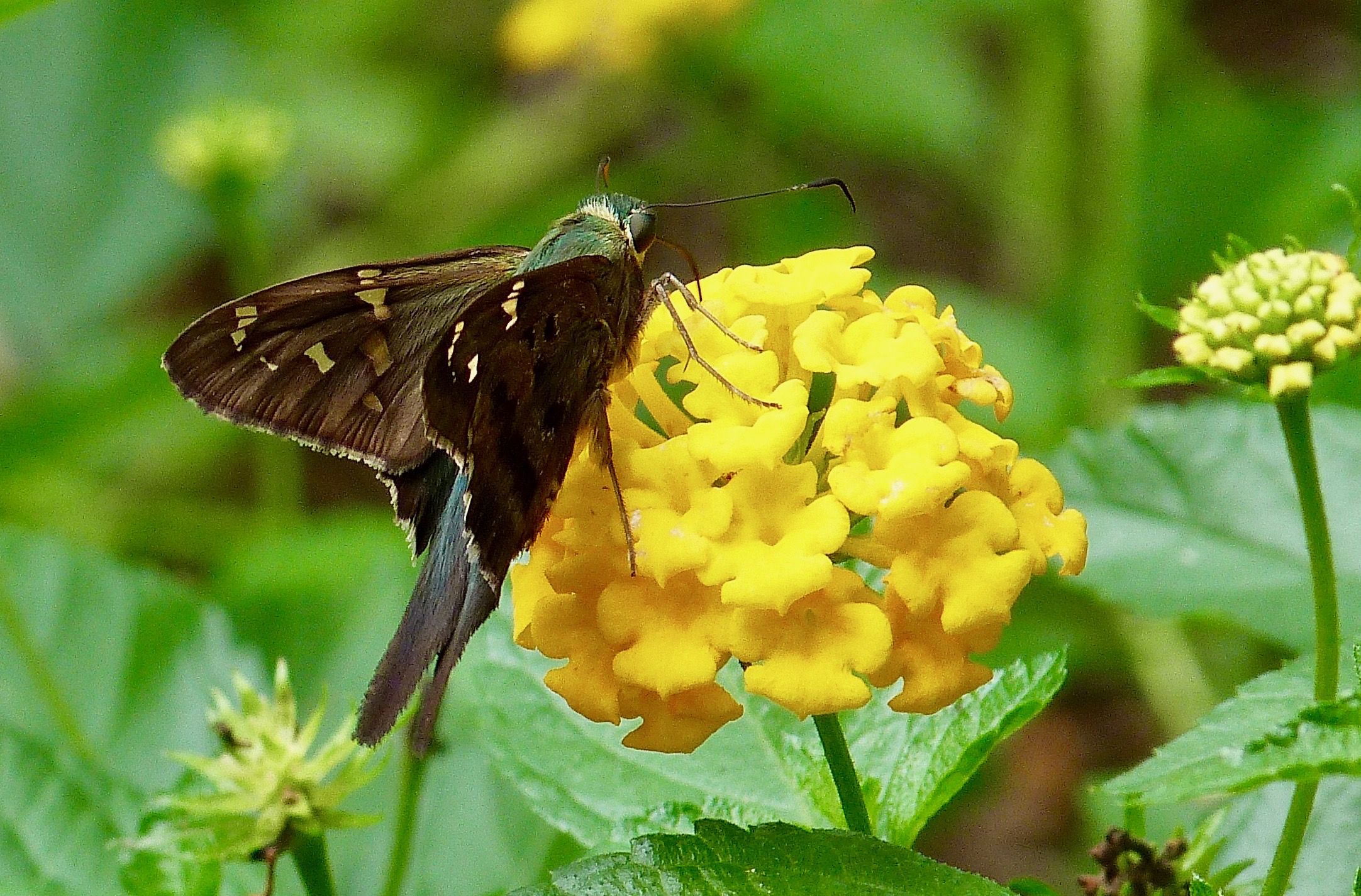Long-tailed Skipper in the Garden
 Sunday, September 17, 2017 at 8:00PM
Sunday, September 17, 2017 at 8:00PM Have you ever been in the garden, minding your own business, when suddenly you were attacked by a butterfly?
It may have been a Long-tailed Skipper, Urbanus proteus. This butterfly is primarily brownish but is distinguished by its beautiful, iridescent green body and wing bases and long, half-inch tails extending behind its hindwings.  You may mistake it for a moth, but it is more related to the butterflies.
You may mistake it for a moth, but it is more related to the butterflies.


It flies in an erratic pattern, skipping around, thus the name "skipper."
The male of this species is very territorial.  He perches, looking out over his territory, and he will fly at anything that enters the area. If it is a female Long-tailed Skipper, he is a happy critter and immediately tries to mate with her. He will try to chase off anything else, including humans.
He perches, looking out over his territory, and he will fly at anything that enters the area. If it is a female Long-tailed Skipper, he is a happy critter and immediately tries to mate with her. He will try to chase off anything else, including humans.
Long-tail skippers are found throughout the southeastern US, as well as some very southern portions of the western US. It is also found in parts of Mexico, the Caribbean, Central and South America.
Host plants for the Long-tailed Skipper are primarily legumes, such as beans, peas, begger weeds and wisteria. Caterpillars will cut the leaves and roll the edges into tubes, which are held together by silken strands the caterpillars extrude for the purpose. The carterpillars use the tubes as retreats when they are not feeding. Farmers sometimes look on these caterpillars as pests.  Long-tailed Skipper caterpillarWhen disturbed the caterpillars will spit out a bright green fluid.
Long-tailed Skipper caterpillarWhen disturbed the caterpillars will spit out a bright green fluid.
I welcome these lovely butterflies into my garden. They benefit from nectar-rich blooms such as the lantana shown in my garden here. Other late summer flowers, including Joe Pye weed, asters, goldenrod, and mistflower are also attractive to them, as well as to other butterflies.